MONTCLAIR, N.J. — As a high-school senior in New Jersey, Ernesto Reyes Velasco couldn’t envision himself taking the leap to become an independent college student. Neither of his parents, who are immigrants from Mexico, had gone to college. He didn’t have close friends as examples. Money was tight.

But this past summer Reyes Velasco spent five weeks on Montclair State University’s campus as part of a program designed to support incoming first-year low-income students. He took college classes for credit, received tutoring and advising and learned about other services available on campus and where to find them.
“I gained the confidence I needed,” said Reyes Velasco, who is now a first-year student. “And I really feel like I have an edge now, where I know what to expect in fall semester, I know how to act.”
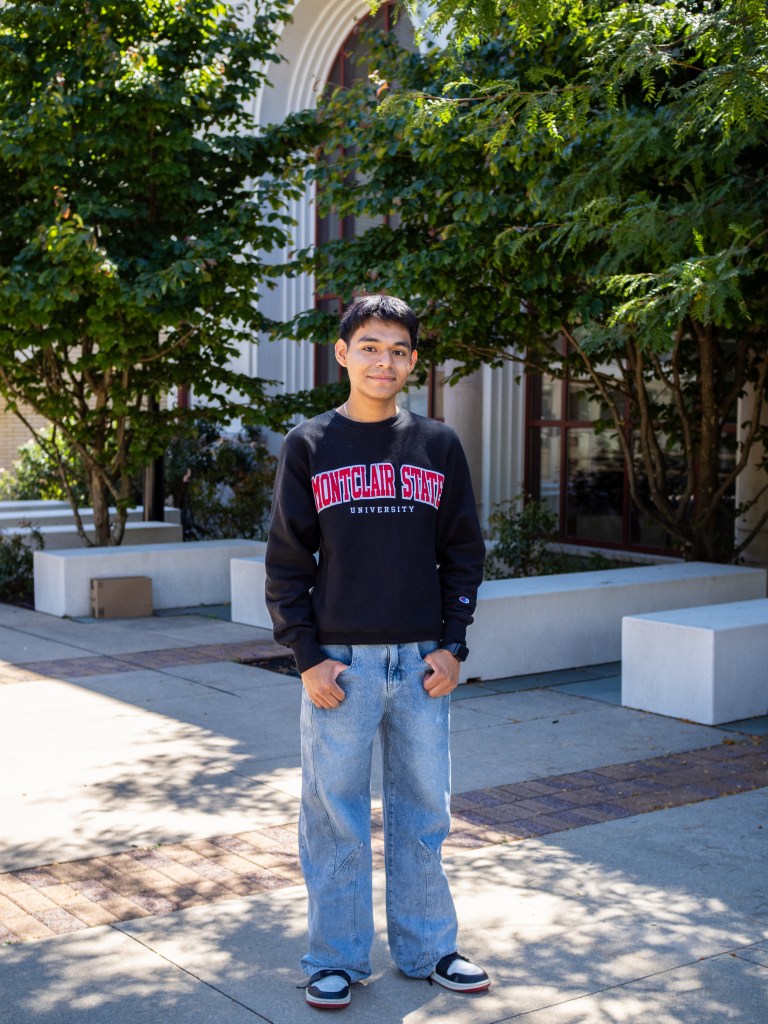
Students like Reyes Velasco often receive federal Pell Grants, which were designed to help them attend college and earn degrees. But nationally just under half of these students graduate from four-year institutions within six years, compared with more than two-thirds of students who receive neither Pell Grants nor direct subsidized loans, according to federal education data.
With so many Pell Grant students falling short of the program’s goal — and schools complicit in that failure — what can colleges do to turn it around? It’s a stubborn and complicated question.
A handful of large, broadly accessible public universities have begun to answer it and are graduating large shares of low-income students at higher-than-average rates. For example, Montclair State; the University of California, Riverside; the University of California, Merced; and Rutgers University-Newark admit more than three-quarters of all applicants, and roughly half or more of their full-time, first-time students receive Pell Grants, according to institutional and federal data. According to 2020 data, at least 65 percent of low-income students at these colleges completed their degrees within six years.
Some flagship public universities, elite private colleges and historically Black colleges and universities also graduate low-income students at high rates, but those are more selective schools, have lower shares of low-income students overall or a combination of both.
The less-selective schools that graduate high shares of low-income students help them succeed not only by reducing financial barriers, but also by providing an array of academic support through learning communities, peer support and undergraduate research experiences. In addition, they deliberately find ways to increase students’ sense of belonging on campus.
“I don’t know if there’s one thing — I think it’s a blend,” said Louie Rodriguez, vice provost and dean for undergraduate education at UC Riverside, where in the 2021-22 school year 46 percent of freshmen received Pell Grants and 75 percent of Pell recipients graduated within six years. “There’s an emphasis on getting students connected to opportunity.”
Related: Interested in innovations in the field of higher education? Subscribe to our free biweekly Higher Education newsletter.
The Pell Grant, now capped at $7,395 for the academic year, often does not cover full tuition. Most awards go to students who have family incomes below $30,000. State programs and institutional financial aid can help them make up the difference.
But “one of the big obstacles for low-income families is understanding what the costs are going to be” and being able to plan accordingly, said John Gunkel, senior vice chancellor for academic affairs and strategic partnerships at Rutgers University-Newark, where 64 percent of Pell Grant recipients graduate within six years.
About 10 years ago, Gunkel and his colleagues restructured financial aid packages to help students and their families anticipate their costs over four years and added technology funds and emergency aid programs for unexpected situations, like a job loss or housing emergency.
“They don’t have a very big financial safety net,” Gunkel said of low-income families, which can lead to a student being suddenly pulled out of higher education.
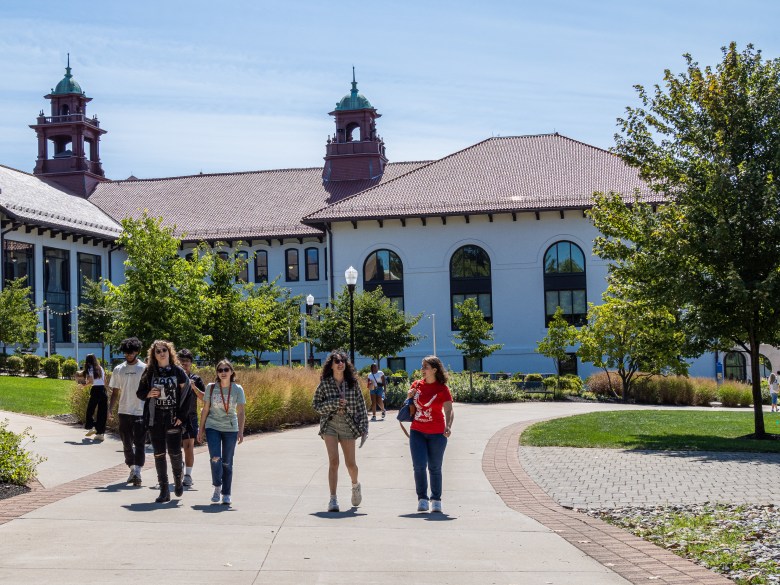
In New Jersey, the Educational Opportunity Fund, established in the aftermath of the 1967 Newark riots, helps cover college costs like books, fees and room and board for low-income students. The program is making it possible for Reyes Velasco to attend Montclair State and live in a dorm.
In addition to the summer bootcamp that Reyes Velasco attended, the EOF program includes mandatory tutoring during the first semester and monthly meetings with an adviser throughout students’ undergraduate years.
“Those touch points are at the core of what helps to move the needle for first-generation, limited-income scholars,” said Montclair State’s associate provost for educational opportunity and success programs, Daniel Jean. Nearly half of Montclair State undergraduates receive Pell Grants, and 63 percent graduate within six years, according to the most recent federal data.
Jean, the son of Haitian immigrants, grew up in poverty in Newark and himself got help from the EOF program as a college student. “It transformed my life,” he said, helping him turn around abysmal grades and ultimately earn a doctorate.
Related: What happens when a college recruits Black students others consider too risky?
UC Riverside and Rutgers University-Newark similarly offer incoming students who test into a developmental math or writing course the option of coming to campus and taking the course before freshman year so they can start on a strong foundation. Riverside offers financial aid for this, and Rutgers covers the cost internally.
During their first year, UC Riverside students who are enrolled in “gateway courses” like biology, chemistry, math or physics can join study groups led by peers who have already done well in those subjects. And students who fail one of those courses can receive a stipend to take it again with additional support.
Rodriguez, the Riverside vice provost, said this type of supplemental instruction can make a big difference. “We want the students to stay in their major of choice,” he said, whether in the sciences, social sciences or otherwise.
“Learning communities,” in which cohorts of students, usually in their first year, take core classes together, participate in workshops, get exposed to career development and sometimes live together, are another way of supporting the transition to college.
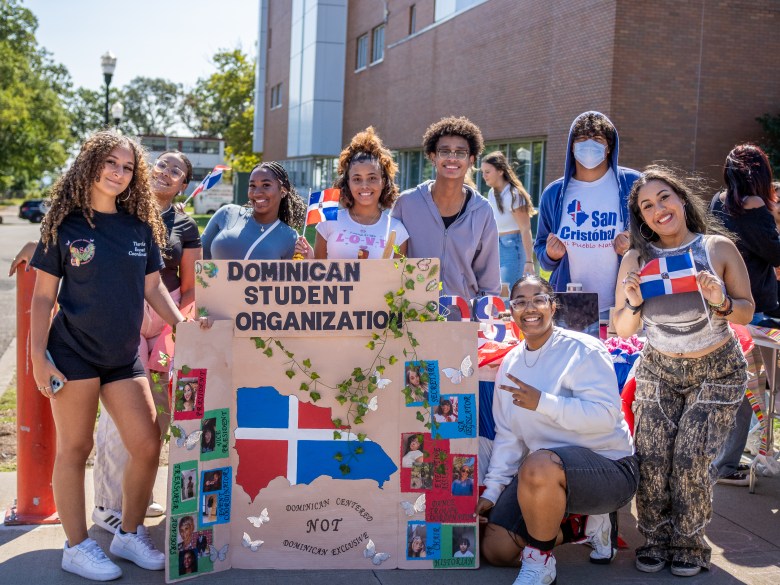
At UC Merced, where almost 60 percent of freshmen receive Pell Grants, such communities help students build a family of peers, said Brian O’Bruba, interim vice chancellor for student affairs, and “that helps students feel more connected to campus.”
Matthew Lansing, a first-generation college student who qualified for full financial aid, received little guidance from family members when he registered at Merced. He casually checked a box indicating his interest in participating in a learning community and joined one focused on clean energy his freshman year.
The group of about 30 students lived on the same floor, for the most part, and landed in some of the same core introductory classes, including physics and calculus, Lansing said. They also participated in weekly dinners where they discussed current topics in renewable energy.
During these dinners, Lansing, an electrical engineering student, forged a relationship with Professor Sarah Kurtz, the chair of his department. He said conversations with professors at these dinners were more relaxed than in the classroom or office hours.
“It’s a little more casual, and they’re going to be there for an hour, so you can actually talk to them,” Lansing said. Office hours can feel rushed, he said, and “you have a lot of pressure to be very intellectual.”
Related: Often overwhelmed on big campuses, rural college students push for support
Kurtz advised Lansing on which classes to take and wrote him a recommendation for a summer field-based environmental science program. Lansing said he only got the idea to apply after hearing a friend in the learning community talk about his summer job plans.
“I don’t think I would have had as much direction and I wouldn’t have taken as many opportunities” if it hadn’t been for the learning community, Lansing said.
Trizthan Jimenez Delgado, a UC Merced junior whose parents didn’t attend college, connected to campus a different way.
During her sophomore year, Jimenez Delgado went out on a limb and asked her ecology professor about open research positions. That professor became a mentor, and Jimenez Delgado joined her lab, which led to additional research experiences. Last spring she worked with graduate student Christopher Bivins to extract and sequence DNA from fungi.
“We identified a new mushroom species, which was insane,” she said. “I’m going to be a co-author when he publishes.”
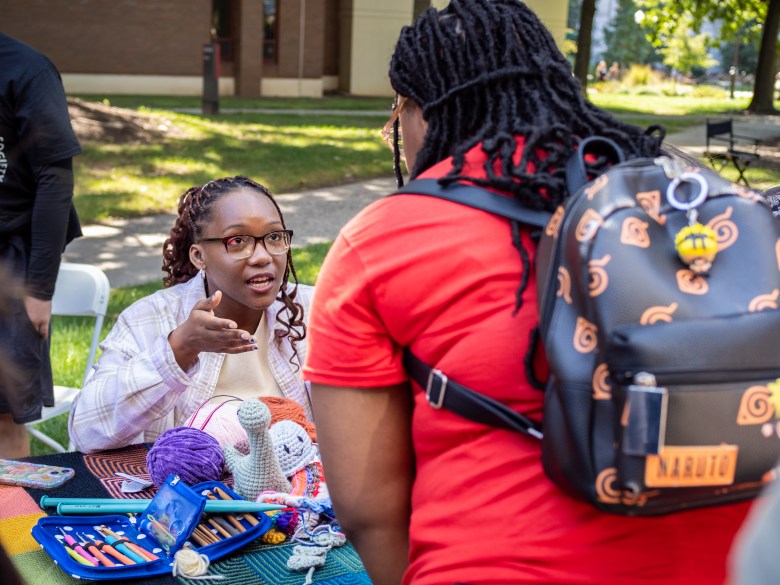
At UC Merced, where more than 68 percent of low-income students graduate within six years, 42 percent of undergraduate students participate in research with faculty — well above the national average and also the highest share of any UC, O’Bruba said, citing UC and national survey data.
Undergraduate research and learning communities are both well-known as “high-impact practices” that support student learning and success, said Ashley Finley, vice president for research at the American Association of Colleges and Universities. Other such practices include first-year seminars, writing-intensive courses, service learning, internships and study abroad.
These practices are linked to higher student GPAs and higher retention and graduation rates, research has shown. The effects are particularly pronounced when students participate in more than one — and they are especially positive for Black and Latino students, first-generation students and low-income students.
When done well, Finley said, high-impact practices tend to include high levels of interaction, feedback and reflection; have real-world connections; and offer students an opportunity to demonstrate their competence publicly.
Jimenez Delgado, an undocumented student who was born in Mexico but grew up in the Los Angeles area, said that “coming to college, I felt like it was going to be a lot of culture clashing — and it wasn’t.”
One reason for that was the Monarch Center on Merced’s campus, which provides services for undocumented students and a place for them to hang out. The center is one of a suite of programs under the Calvin E. Bright Success Center designed to foster a sense of belonging among students, especially those who are underrepresented or face additional obstacles, including homeless students, foster youth and formerly incarcerated students.
Through the Monarch Center, Jimenez Delgado participated in a career seminar where she learned about research and professional opportunities, found out about resources for undocumented students and met people like herself.
Related: College Uncovered podcast, Un-welcome to college
“Knowing that there are similar students around me makes me feel more confident,” she said.
Rutgers-Newark, which also has a large immigrant population and where two-thirds of all undergraduates are low-income students, has likewise been intentional about making students feel at home, Gunkel, the senior vice chancellor, said. The university operates a food pantry, has dedicated prayer spaces for its many Muslim students, among others, and blocks time off during the week when undergraduate classes cannot be scheduled so that student organizations can run programming.
“A lot of it has been about creating an environment in which students want to stay,” Gunkel said.
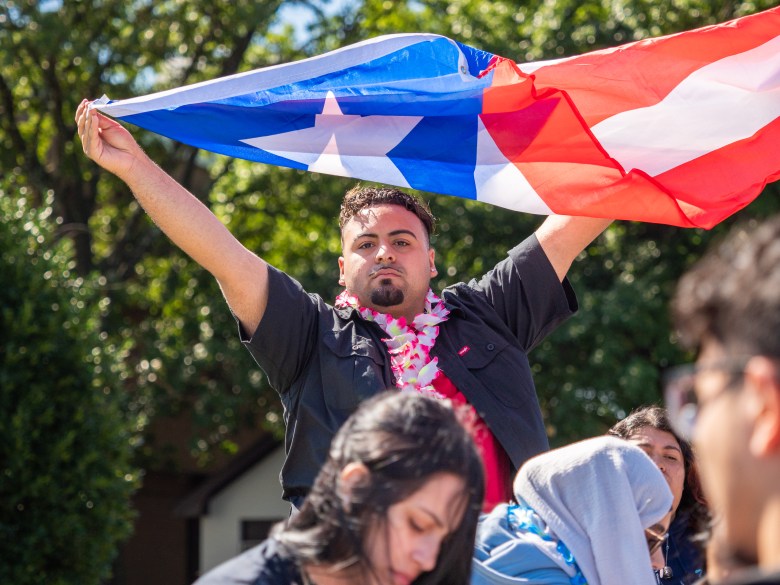
At Montclair State’s opening day this year, more than 100 student clubs, including The Brotherhood/La Hermandad for Black and Latino men, a pre-med group and a roller hockey club, set up tables along a campus corridor before an afternoon barbecue and carnival. The clubs displayed cultural flags and handmade posters, blasted music and enticed potential recruits with Skittles, Kit Kats and Oreos.
Darielly Suriel, a senior majoring in history, was representing the Dominican Student Organization (“Dominican centered, not Dominican exclusive”), which she and other students founded last year.
“I really didn’t feel like I had a place here until I joined,” said Suriel, who is from Jersey City and plans to become a teacher.
Her club hosts weekly meetings where students talk about Dominican slang and Caribbean food, as well as fundraisers and an annual gala with music, food and dancing.
At the club fair, Suriel said, “We get a lot of transfer students and freshman students. We let them know, you do have a home here — your home away from home.”
Lawrie Mifflin edited this story. Contact her at mifflin@hechingerreport.org.
This story about Pell Grant graduation rates was produced by The Hechinger Report, a nonprofit, independent news organization focused on inequality and innovation in education. Sign up for our higher education newsletter. Listen to our higher education podcast.



